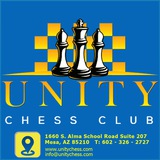📘 17...N×d5?!
A dubious sacrifice.
Black could have played something like Qd6, Rc8 or Bg4.
18.Q×d5 Bg4 19.Nd2 Rad8 20.Qb3 B×d1 21.R×d1 +/-
A dubious sacrifice.
Black could have played something like Qd6, Rc8 or Bg4.
18.Q×d5 Bg4 19.Nd2 Rad8 20.Qb3 B×d1 21.R×d1 +/-
📘 17...f5?
17...Nd4 or simply 17...Bf5 are more logical.
18.Ne×c5 d×c5 19.B×c5 Ned6 20.e×d6 +-
17...Nd4 or simply 17...Bf5 are more logical.
18.Ne×c5 d×c5 19.B×c5 Ned6 20.e×d6 +-
20...g5?
26-year-old Russian grandmaster Nikita Matinian made a mistake which has been exploited by Shahin.
21.Rd6! R×d6 22.e×d6 Q×d6 23.f×g5 Bg7 24.Q×e6+ Q×e6 25.B×e6+ Kh8 26.Nh4 +-
26-year-old Russian grandmaster Nikita Matinian made a mistake which has been exploited by Shahin.
21.Rd6! R×d6 22.e×d6 Q×d6 23.f×g5 Bg7 24.Q×e6+ Q×e6 25.B×e6+ Kh8 26.Nh4 +-
📘 38.d6??
Mersad Khodashenas' blunder in an equal position (38.Rf7+ Kg4 39.K×g6 Re2 40.f5=).
He is a 20-year-old Iranian international master.
38...Rd2 39.Rf7+ Kg4 40.Rf6 h2 41.R×g6+ Kf3 42.f5 h1=Q 43.Kg7 Qa1+ 0-1
Mersad Khodashenas' blunder in an equal position (38.Rf7+ Kg4 39.K×g6 Re2 40.f5=).
He is a 20-year-old Iranian international master.
38...Rd2 39.Rf7+ Kg4 40.Rf6 h2 41.R×g6+ Kf3 42.f5 h1=Q 43.Kg7 Qa1+ 0-1
📕 20...g5!?
Simplified yes, but black can launch a 'majority attack' - advancing his king-side pawns to create space and expose weaknesses. Black is better precisely because it is much more problematic to launch the equivalent on the queenside. In fact, such endings arise with relative frequency in the Sicilian and are hence of considerable practical importance.
Simplified yes, but black can launch a 'majority attack' - advancing his king-side pawns to create space and expose weaknesses. Black is better precisely because it is much more problematic to launch the equivalent on the queenside. In fact, such endings arise with relative frequency in the Sicilian and are hence of considerable practical importance.
📕Unity Chess Multiple Choice 291
anonymous poll
B: c6 – 8
👍👍👍👍👍👍👍 62%
C: B×c3 – 3
👍👍👍 23%
A: Re8 – 2
👍👍 15%
👥 13 people voted so far.
anonymous poll
B: c6 – 8
👍👍👍👍👍👍👍 62%
C: B×c3 – 3
👍👍👍 23%
A: Re8 – 2
👍👍 15%
👥 13 people voted so far.
📕Unity Chess Multiple Choice 292
A: Rc4 – 9
👍👍👍👍👍👍👍 64%
C: Rc7 – 3
👍👍 21%
B: f5 – 2
👍👍 14%
👥 14 people voted so far.
A: Rc4 – 9
👍👍👍👍👍👍👍 64%
C: Rc7 – 3
👍👍 21%
B: f5 – 2
👍👍 14%
👥 14 people voted so far.
At the drawing of lots for the traditional Wijk aan Zee tournament, 14th January 1980. Jan Timman, Viktor Korchnoi & Hans Böhm.
@UnityChess
@UnityChess
Amsterdam IBM tournament, July 1980. A handshake before play in the 9th-round encounter between Jan Timman and World Champion Anatoly Karpov.
@UnityChess
@UnityChess
This media is not supported in your browser
VIEW IN TELEGRAM
As the negotiations for a world title match with Bobby Fischer failed, in April 1975 Anatoly Karpov became the new world champion.
@UnityChess
@UnityChess
The 64th match by telegraph between New South Wales and Victoria (Sydney/Melbourne, June 21, 1958). Among the players: Karlis Ozols, John Purdy, Gregory Koshnitsky and Cecil Purdy. The series started in 1870 and, by 1958, New South Wales had won 31 matches, lost 23 and drew 9.
@UnityChess
@UnityChess
